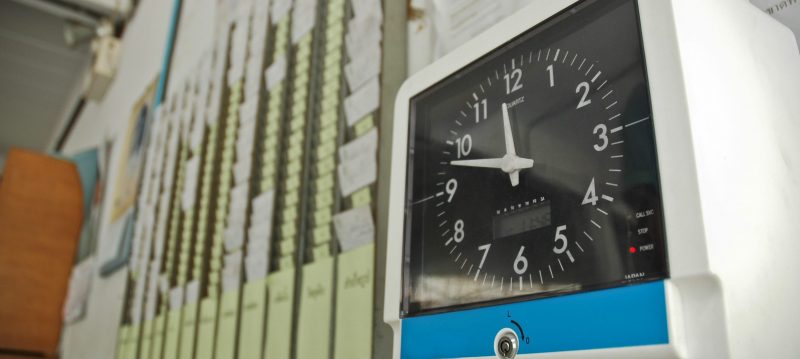The pandemic has been and will continue to be hugely disruptive. That’s obvious.
The fallout from COVID-19 is – rightfully or wrongfully– causing us to revisit and reconsider so much. We have no choice but to reflect on how we work, how we live and how we learn. 
For example, there is a rising belief that for white-collar workers, offices will be a relic of the past (I vehemently disagree but that’s for another post). Similarly, the permanence and viability of brick-and-mortar retail and restaurants are very much in doubt. Virtual learning was already prevalent before the pandemic, but now many forecast it will, or should be, the norm. Indeed, the hottest new internet search term right now is “new normal.”
To emerge from the pandemic stronger and better equipped for the future, many experts are urging us to use this moment in history to truly reevaluate how our lives were pre-COVID. The coronavirus is an inflection point – a moment in time to ponder who we are and who we want to be. As such, we should embrace a beginner’s mind (see my previous post).
We should see everything we used to do habitually pre-COVID as novel and foreign. Hold it up to the light and assess it. Walking around in a grocery store? Sounds unsafe. Cramming into a concert hall, bar or club? Definitely crazy. Driving 45 minutes to an office building? Yikes!
The pandemic is threatening to wipe out many of our habits. Both our beloved and our despised pre-COVID norms and behaviors may not make it in a post-pandemic world. Future generations will look back upon the wholesale changes that the pandemic has wrought across society as anthropologists. They will sift through those behaviors and rituals that survived from those that went extinct.
For the betterment of all workplaces, let us hope the timesheet goes the way of the dinosaurs and the dodo bird.
The Timesheet – A Brief History
No one actually likes timesheets, but getting rid of them won’t be easy. They predate Jesus, the Buddha and Confucius. Of course, with industrialization, timesheets became commonplace – neigh, vital. And today, millions of workers are compelled to complete some sort of time-tracking every day.
But the timesheet has humble beginnings. In 1888, a jeweler named Willard Bundy created the mechanical time clock. By manually inserting a card into a slot, the machine would punch or stamp the time of a worker’s arrival and departure on it.
These older timeclocks were not what you call “user-friendly.” These instruments of brute force captured a worker’s time in and time out of the office or factory and then calculated work time. Sometimes with breaks and the like, there were more than 40 timestamps in a week for just one worker.
Luckily, we have come a long way since then. But at their core, most current online versions of timestamps are distant relatives of Bundy’s invention. All time-tracking systems track the number of hours or time an employee spends at work by definition, either to calculate how much to pay them or, more recently, how much to bill a customer.
It is ironic but Bundy’s company later became part of what is known today as IBM. It was IBM – Big Blue – in the 1950s and 1960s that ushered in the rise of the office worker like no other firm in history. And in a way, it is the IBMs of the world that have made timesheets obsolete.
The Problem with Timesheets
The world has changed quite a bit since Bundy walked among us. More and more of us shift from manual labor to knowledge work. With this tectonic labor shift, the idea of tracking time becomes increasingly anachronistic. Timesheets had value when we measured the productivity of a worker by his output relative to the time spent working. When X amount of time was expected to produce Y, it made sense to capture the X.
If a certain worker was able to produce more in less time, all the better – maybe even consider granting them a higher hourly wage. Timesheets made sense when the relationship between input and output was obvious, linear and could be represented as a formula. We can thank scientific management and Frederick Winslow Taylor for that (see my prior post on Digital Taylorism).
But as we shift to from using our hands to using our heads, timesheets start to lose their sheen. Quantifying the time we spend sitting in an office in front of a computer or in meetings is not correlated with productivity or output. Defining the amount of time it should take to create a specific financial report, draft a strategy presentation, or write a piece of code is hard. It is much harder than defining the time it should take to produce a new manufactured good on an assembly line. Let’s not even get into whether those millions of hours of meetings held every day in our country are a productive use of time (definitely more in a future post).
But timesheets have another problem. Timesheets for “brain work” cannot be accurate. It is much harder to quantify time on the job when there is little physical evidence to justify it. What if we spend 30 minutes daily daydreaming or watching YouTube? Should we log those hours? What if we intentionally jam our calendars with mindless, poorly run meetings just to avoid doing something of actual value? Is that productive time? Conversely, what if we spend time thinking about a problem in the shower or come up with an answer in our sleep? Shall we record it in the timekeeping system?
The accuracy of time-reporting was already suspect even before COVID-19. We may have been physically at work but most of us are either disengaged or distracted. Multi-tasking. Online shopping. Social media. The distraction boxes in our pockets make “time at work” impossible to measure. The smartphone not only put a notification-centric, entertainment-heavy device in our hands 24/7, it also formally invited the office into our homes. Early morning and late-night emails are now the norm. The contiguous 40-hour work week seems so old fashioned.
However, the pandemic has turbocharged the obsolescence of timesheets. It has changed where we work, when we work and how we work. Any boundaries between work life and home life have literally disappeared. We play with our kids during “core working hours.” We do household chores while on conference calls. But we also respond to email from the toilet.
Moving Beyond Timesheets
Change is hard. I have no illusions that we will actually emerge from the pandemic sans timesheets. After all, 3,700 years of timesheets is a long time! The intent behind timesheets is too deeply ingrained into our work mindset and workplace culture to cast off so easily. However, the evolution of how we work, live and learn has accelerated due to the shock that is COVID-19. In the same way, I hope how organizations track their employees will change as well.
One option is augmentation. Bolster time capture with activity recording. Instead of recording just the time we spend each day, let’s convey what we did with our time. Some firms already do this. But it is often time-consuming and burdensome for employees. After all, tracking and recording discrete activities (e.g., wrote an email, completed a memo, attended a meeting, etc.) and time-slicing our working hours into smaller increments will make us all feel like lawyers and accountants. That isn’t ideal since we aren’t really being paid for our time anymore.
Another option is to shift from tracking activities to measuring outcomes. To capture not what we worked on, but what we actually accomplished. This is much harder because of its subjectivity and complexity due to interconnection with the work of others. Linking effort to activities is one thing; that is Point A to Point B. But linking effort to results that may depend on the actions of others is much harder. That is Point A to Point B with several off-ramps and roundabouts along the way. Moreover, results are rarely instantaneous. Meaningful impact takes time to manifest.
A last option marries physical time with mental time. Let’s collect employee engagement alongside work hours. With the shift towards knowledge work, the most enlightened leaders understand that getting the best work is a function of unleashing what a team member does best. That is, they help bring out the “inner genius” in their staff.
We should tailor the role and the job to a person’s innate gifts and capabilities when possible. This will not be carte blanche, do whatever you like on the job. Instead, it is the intentional alignment between the person and the work. It will allow all of us to flex our intellectual and emotional strengths more often. Indeed, some folks are more analytical. Others more relational and people-oriented. Some are big thinkers. Others pay attention to the smallest detail. Some enjoy managing others. Others hate it. And that’s OK.
So alongside collecting hours daily, perhaps we should ask our people: “How many hours were you challenged today?” Instead of measuring utilization as a function of billable hours, perhaps we should calculate it as the percentage of time my “best self” was at work today. Or inquire the amount of time a team member was “in flow.”
Radical? Maybe. Needed? Probably. Worth exploring? Definitely. After all, there may be no better time to question the simplest of workplace norms. As the quote goes: “Sometimes you have to let life turn you upside down, so you can learn to live right-side up.”
Wagish Bhartiya is a GovLoop Featured Contributor. He is a Senior Director at REI Systems where he leads the company’s Software-as-a-Service Business Unit. He created and is responsible for leading a team of more than 100 staff focused on applying software technologies to improve how government operates. Wagish leads a broad-based team that includes product development, R&D, project delivery, and customer success across state, local, federal, and international government customers. Wagish is a regular contributor to a number of government-centric publications and has been on numerous government IT-related television programs including The Bridge which airs on WJLA-Channel 7. You can read his posts here.





Leave a Reply
You must be logged in to post a comment.